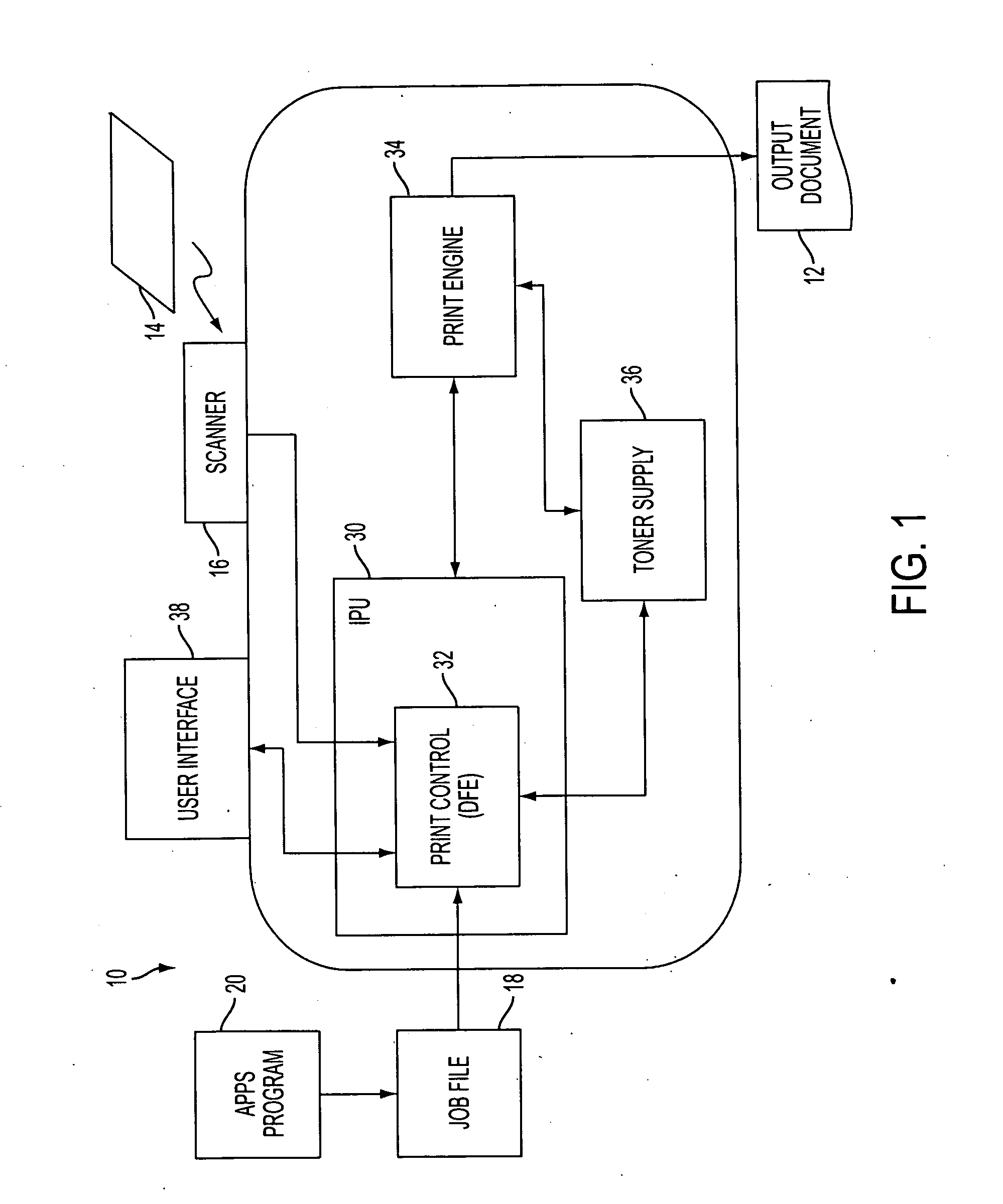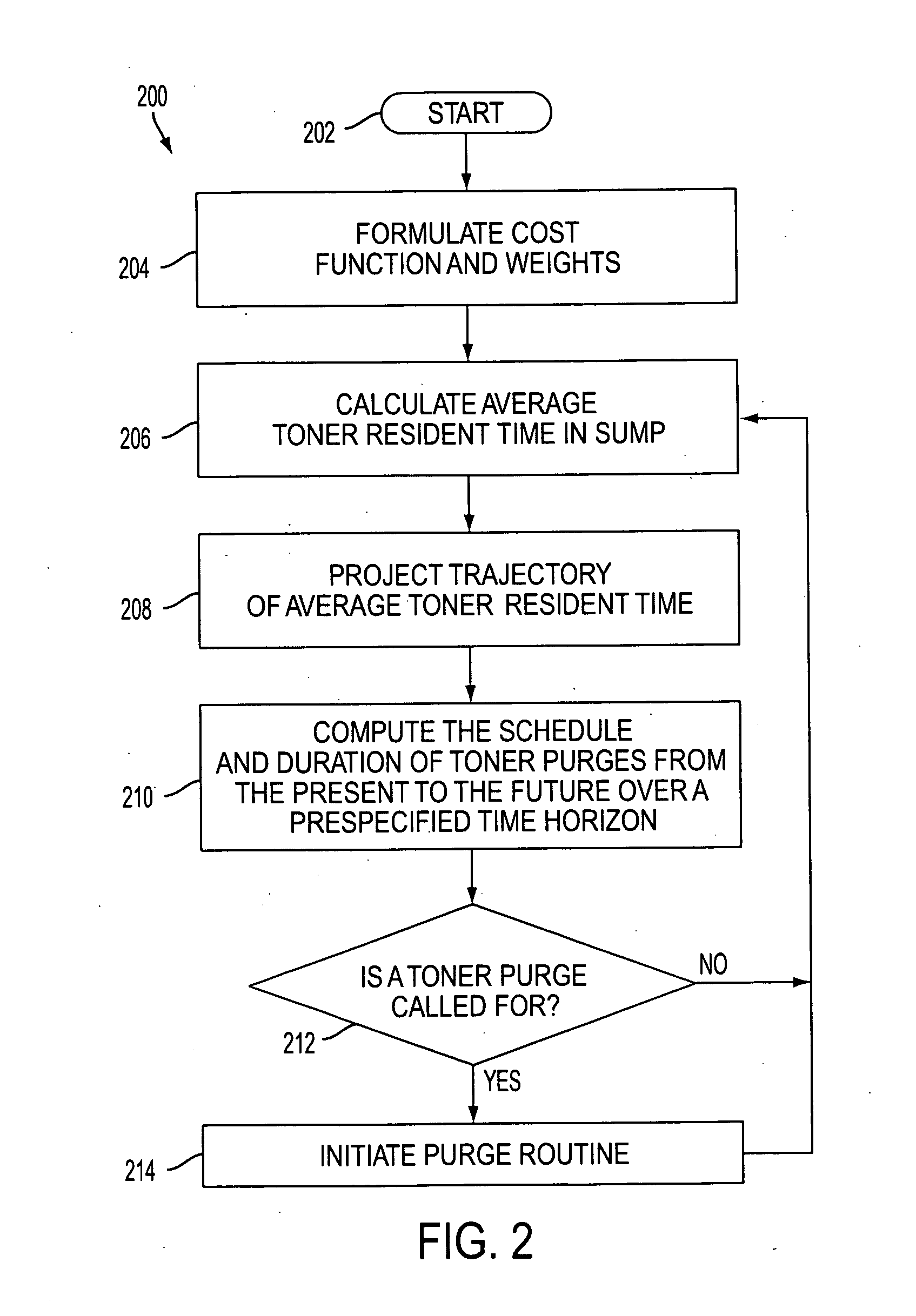Method and system for improved implementation of maintenance routines in a productive system
a maintenance routine and productive system technology, applied in the field of methods and systems for improving the implementation of maintenance routines in productive systems, can solve the problems of reducing overall productivity, unused toner becoming electromechanically fatigued, and overall productivity not being achieved to the desired level, so as to achieve the effect of reducing the cost function
- Summary
- Abstract
- Description
- Claims
- Application Information
AI Technical Summary
Benefits of technology
Problems solved by technology
Method used
Image
Examples
Embodiment Construction
[0030] The presently described embodiments relate to improving system productivity where maintenance purge routines are required through use of a job scheduler implemented in a digital front end (DFE) or a controller of an image rendering system such as a printer. This approach utilizes knowledge of future print jobs to maximize productivity. So, even if a low coverage area job is being processed, and a purge routine is scheduled, the purge routine may be avoided. In this regard, knowledge that a high coverage area job is downstream may be advantageously used by performing the high coverage area job, thereby lowering the average toner age while in a productive mode. The system gains knowledge of whether low coverage area jobs or high coverage area jobs are pending by using information stored within the print job file (e.g., a page description language job file). For example, a page description language (PDL) file typically includes information on the area coverage trajectory over ti...
PUM
 Login to View More
Login to View More Abstract
Description
Claims
Application Information
 Login to View More
Login to View More - R&D
- Intellectual Property
- Life Sciences
- Materials
- Tech Scout
- Unparalleled Data Quality
- Higher Quality Content
- 60% Fewer Hallucinations
Browse by: Latest US Patents, China's latest patents, Technical Efficacy Thesaurus, Application Domain, Technology Topic, Popular Technical Reports.
© 2025 PatSnap. All rights reserved.Legal|Privacy policy|Modern Slavery Act Transparency Statement|Sitemap|About US| Contact US: help@patsnap.com



